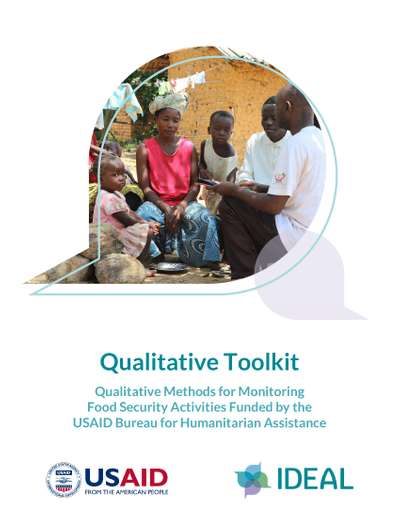USAID General Publications Qualitative Toolkit: Qualitative Methods for Monitoring Food Security Activities Funded by the USAID Bureau for Humanitarian Assistance

Donors, like the USAID Bureau for Humanitarian Assistance (BHA) and implementing partners, rely on evidence collected through robust qualitative and quantitative methods to monitor and evaluate emergency and food security activities—for documentation, learning, decision-making, and adaptive management. While quantitative data allow for the measurement and tracking of a range of indicators, they cannot tell the whole story.
Qualitative data are critical to contextualize and explain quantitative findings, to provide key insights into less quantifiable aspects of activity interventions, and to ensure we are asking the right questions in our quantitative work. Qualitative methods are crucial for the development of context-appropriate quantitative indicators and to conduct meaningful, formative research that informs appropriate and effective intervention design. Importantly, qualitative approaches help reveal why an intervention does or does not work, how, and for whom. By engaging activity participants, qualitative methods of inquiry can also help ensure Accountability to Affected Populations (AAP).